Explore the Rich Heritage of South African Traditional Dresses
Explore the Rich Heritage of South African Traditional Dresses
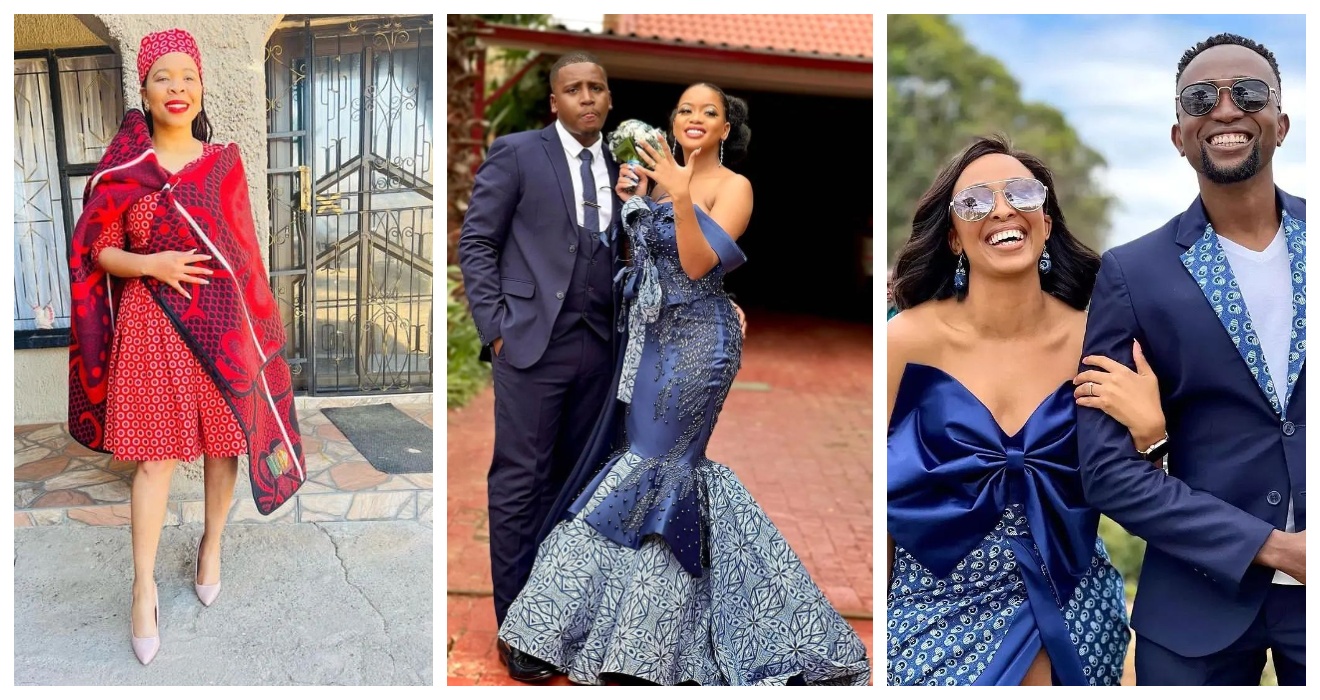
Introduction
South Africa is renowned for its diverse cultural heritage, and one of the most fascinating aspects of this heritage is its traditional dresses. With a rich history and vibrant designs, South African traditional dresses hold immense significance and serve as a reflection of the country’s cultural identity.
Overview of South African traditional dresses and their significance
South African traditional dresses are more than just garments; they are symbolically woven with stories, values, and traditions. Each dress represents a specific tribe or ethnic group, showcasing distinct patterns, colors, and embellishments that hold deep cultural meaning. These dresses serve as a powerful expression of identity, heritage, and pride.
The attire varies across the different regions of South Africa. For example, the Xhosa people don their iconic “Umxhosa,” which consists of intricately beaded accessories and brightly colored skirts. Zulu traditional dresses feature bold geometric patterns and vibrant colors that represent their warrior history. The Ndebele people are known for their striking decorative aprons, necklaces, and headdresses.
South African traditional dresses are not limited to special occasions or ceremonies; they are worn in day-to-day life to commemorate cultural celebrations, weddings, and festivals. The significance of these dresses goes beyond fashion; they represent unity, celebration, storytelling, and a connection to ancestors.
In conclusion, South African traditional dresses are a treasured part of the country’s cultural heritage. They showcase the diversity and beauty of South Africa’s different tribes and serve as an essential element in preserving the rich traditions and customs of the nation. Exploring the world of South African traditional dresses is not only visually stunning but also provides a deeper appreciation for the cultural tapestry that makes this country so unique.
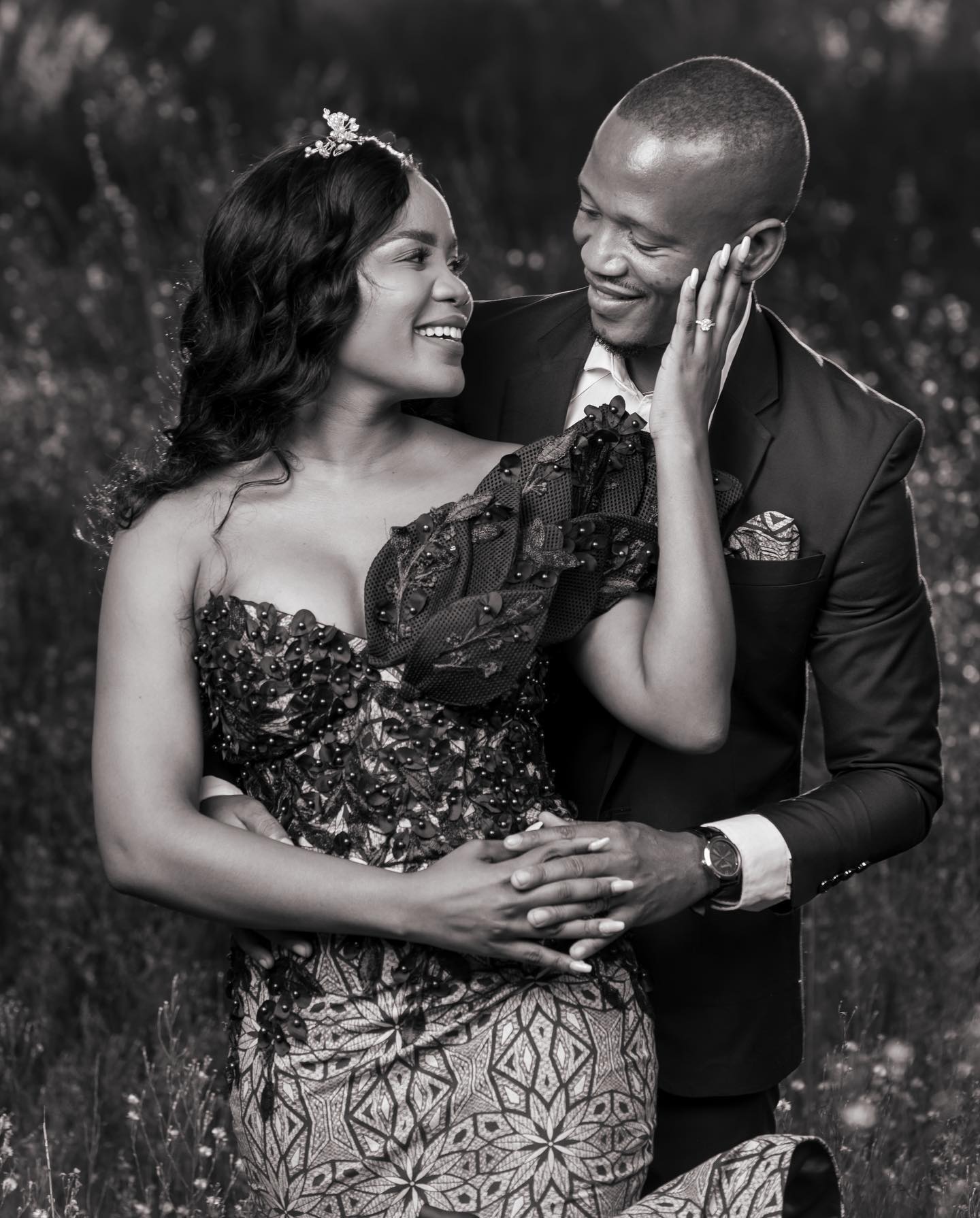
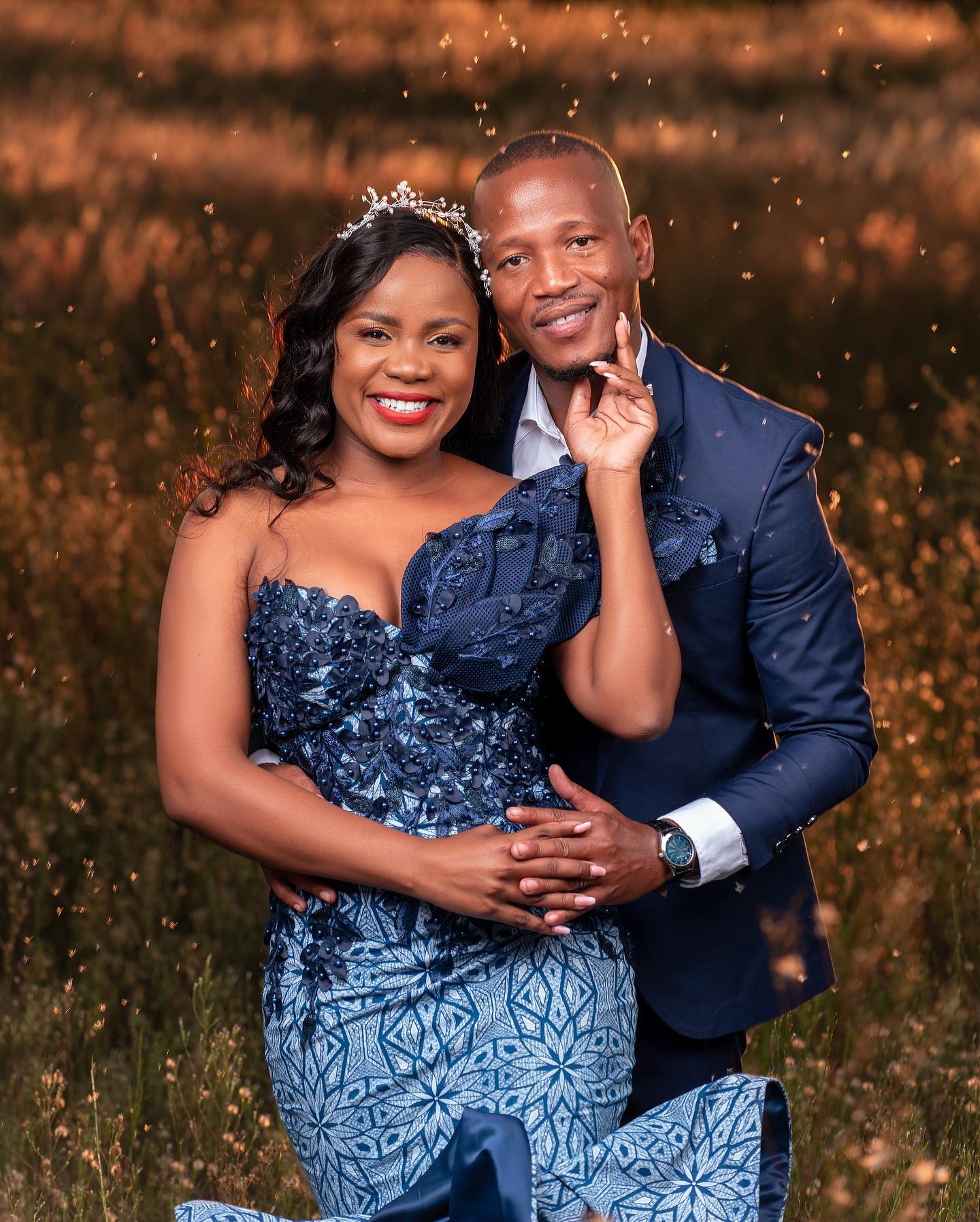
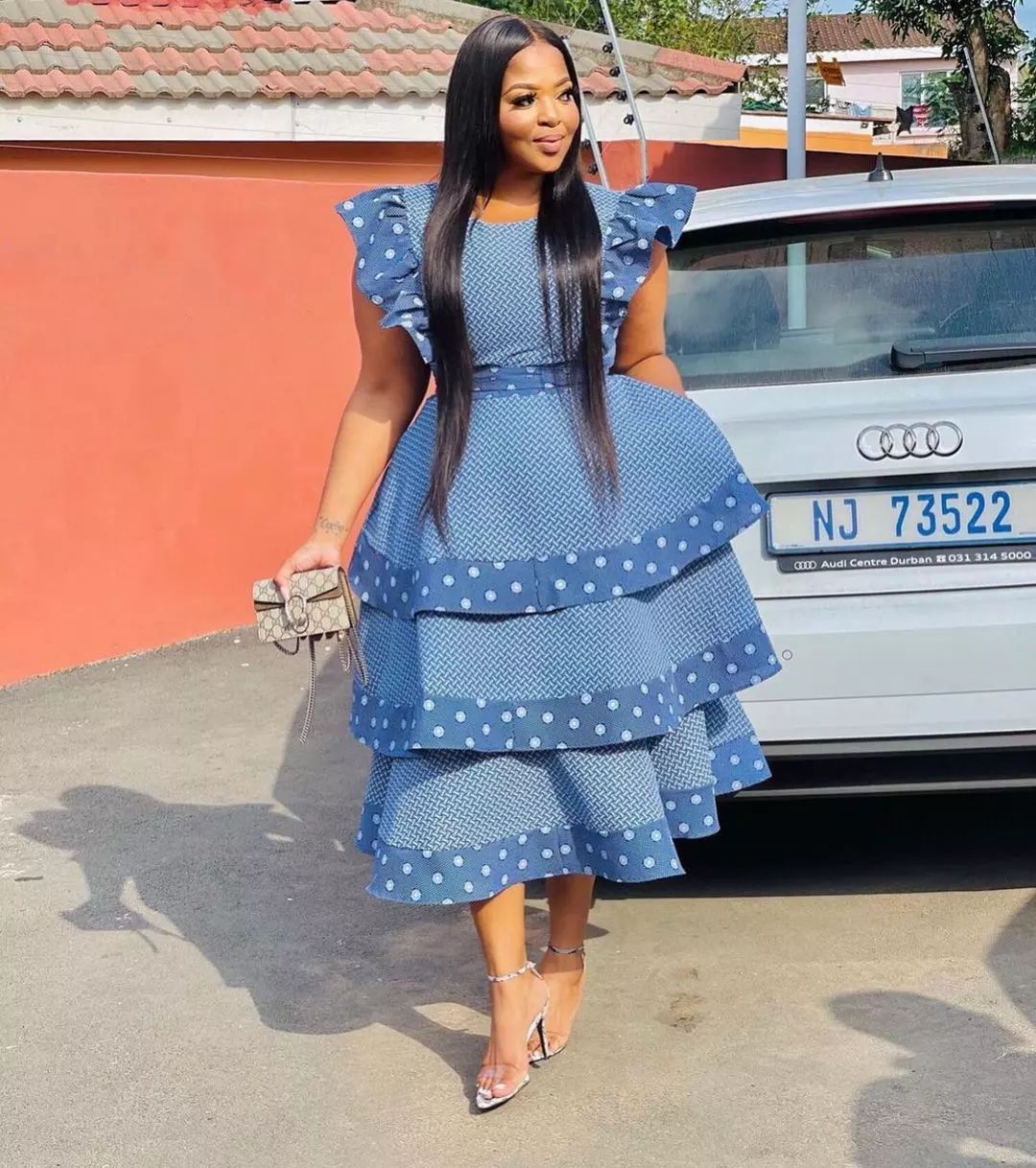
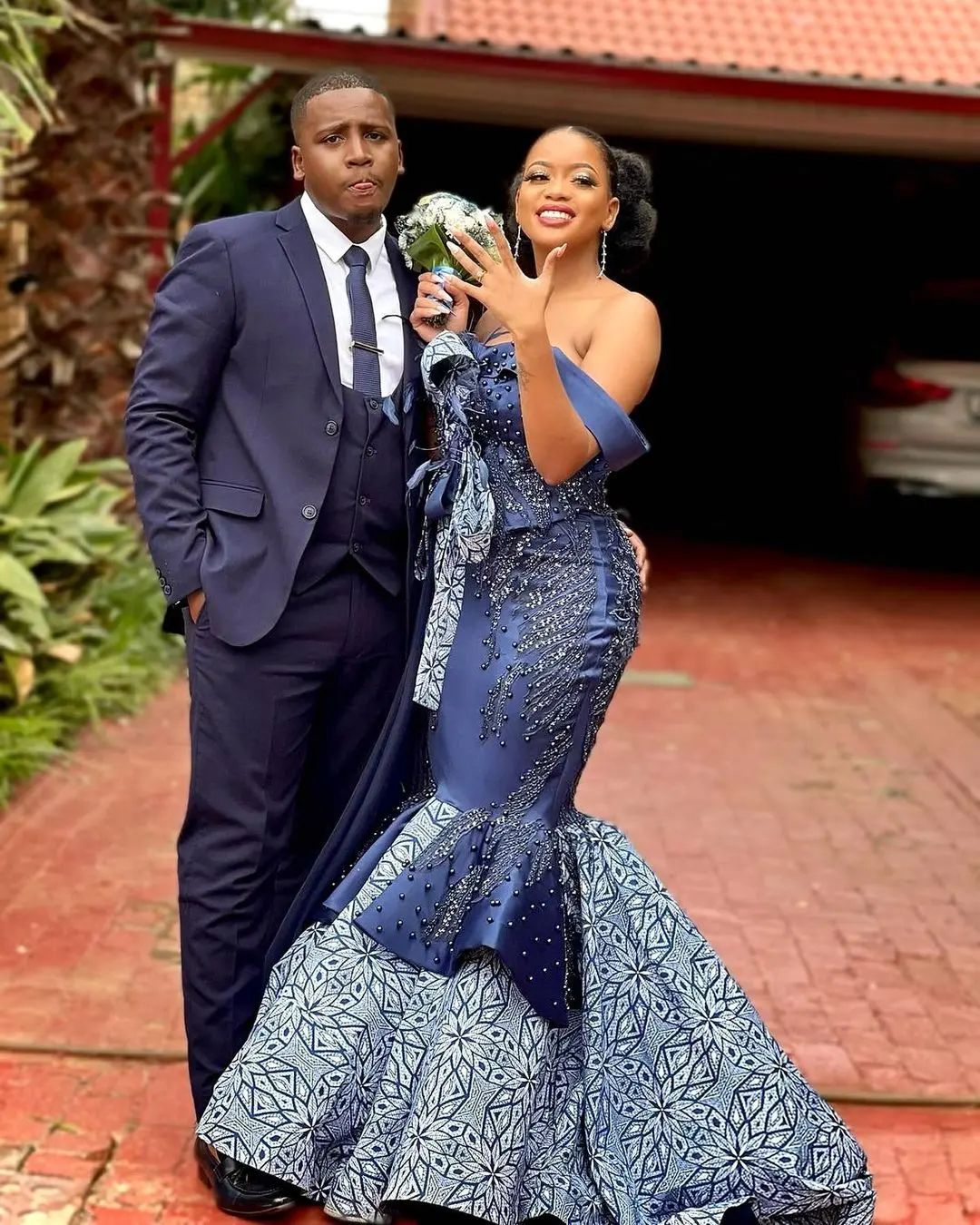
Zulu Traditional Dress
History and characteristics of Zulu traditional dress
The rich and vibrant heritage of South African traditional dresses is something that deserves recognition and exploration. Among the various traditional dresses, the Zulu dress stands out as a symbol of cultural pride and identity.
The history of Zulu traditional dress dates back centuries, with its origins rooted in the Zulu tribe’s customs and traditions. The dress is known for its bold colors, intricate beadwork, and unique patterns. It represents the rich history and cultural significance of the Zulu people, showcasing their traditions and values.

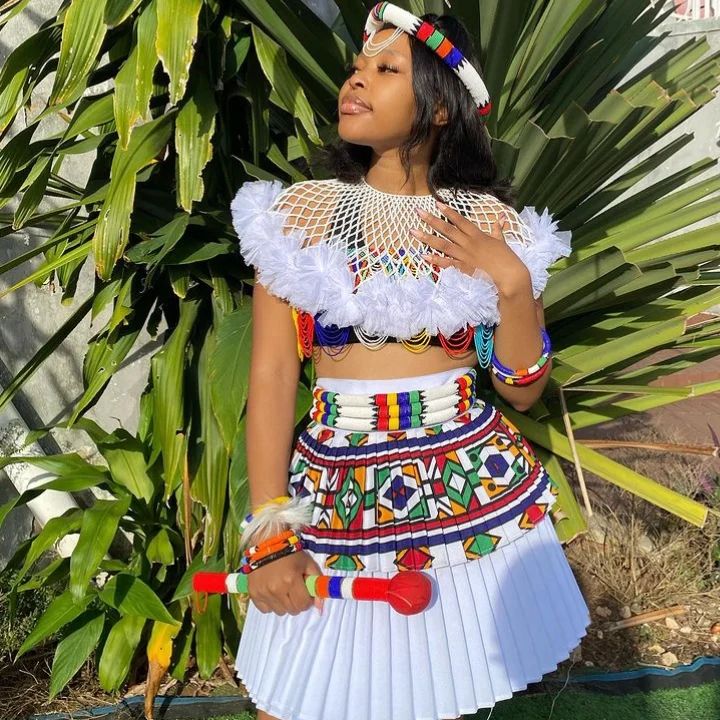
Different styles and accessories
Zulu traditional dress comes in various styles, each with its own significance. Women typically wear an isigege, a skirt made of a patterned fabric, along with a matching top called an isicwaya. Another iconic element is the ibheshu, a pleated skirt worn by both men and women.
Accessories play an essential role in completing the Zulu traditional dress. Isicholo, a hat adorned with colorful beads, adds an extra touch of elegance. Beadwork is also commonly seen on necklaces, bracelets, and anklets, enhancing the overall look.
Exploring the rich heritage of South African traditional dresses provides a deeper understanding of the country’s diverse cultures and traditions. The Zulu traditional dress is just one example of the many fascinating styles that showcase the beauty and uniqueness of South African fashion.
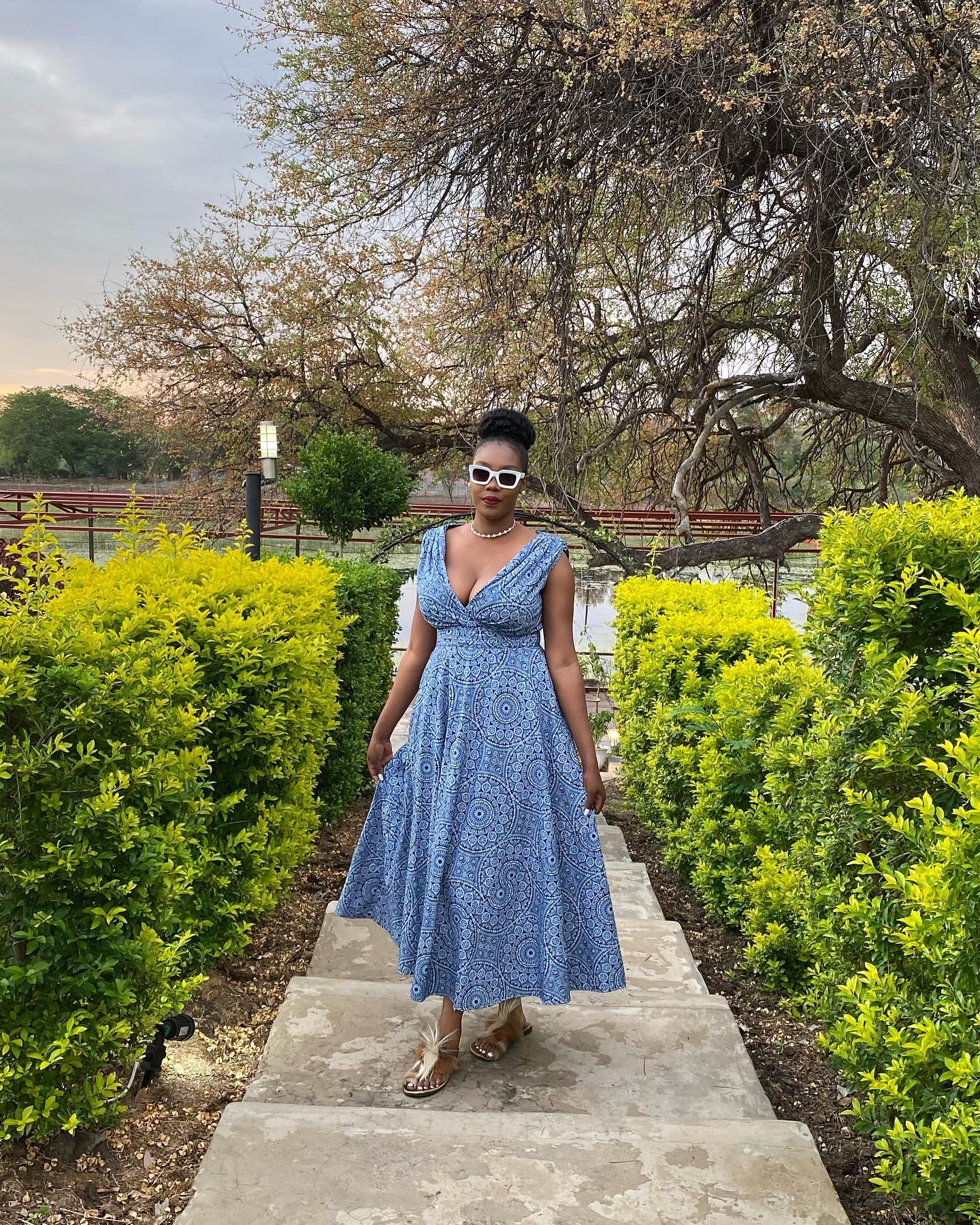
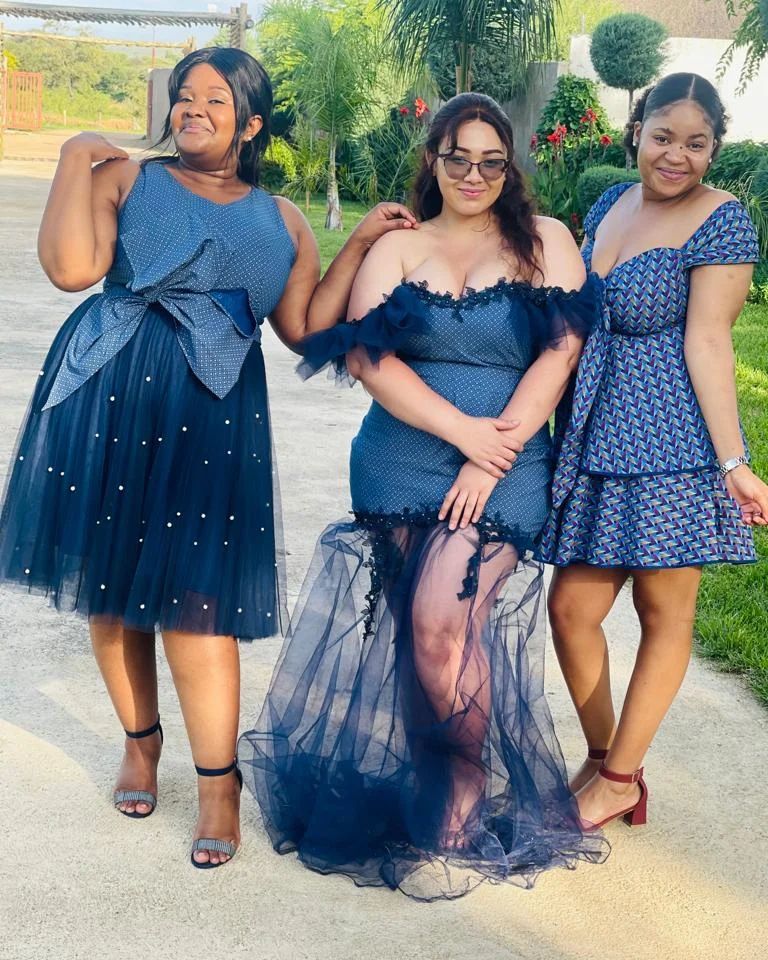
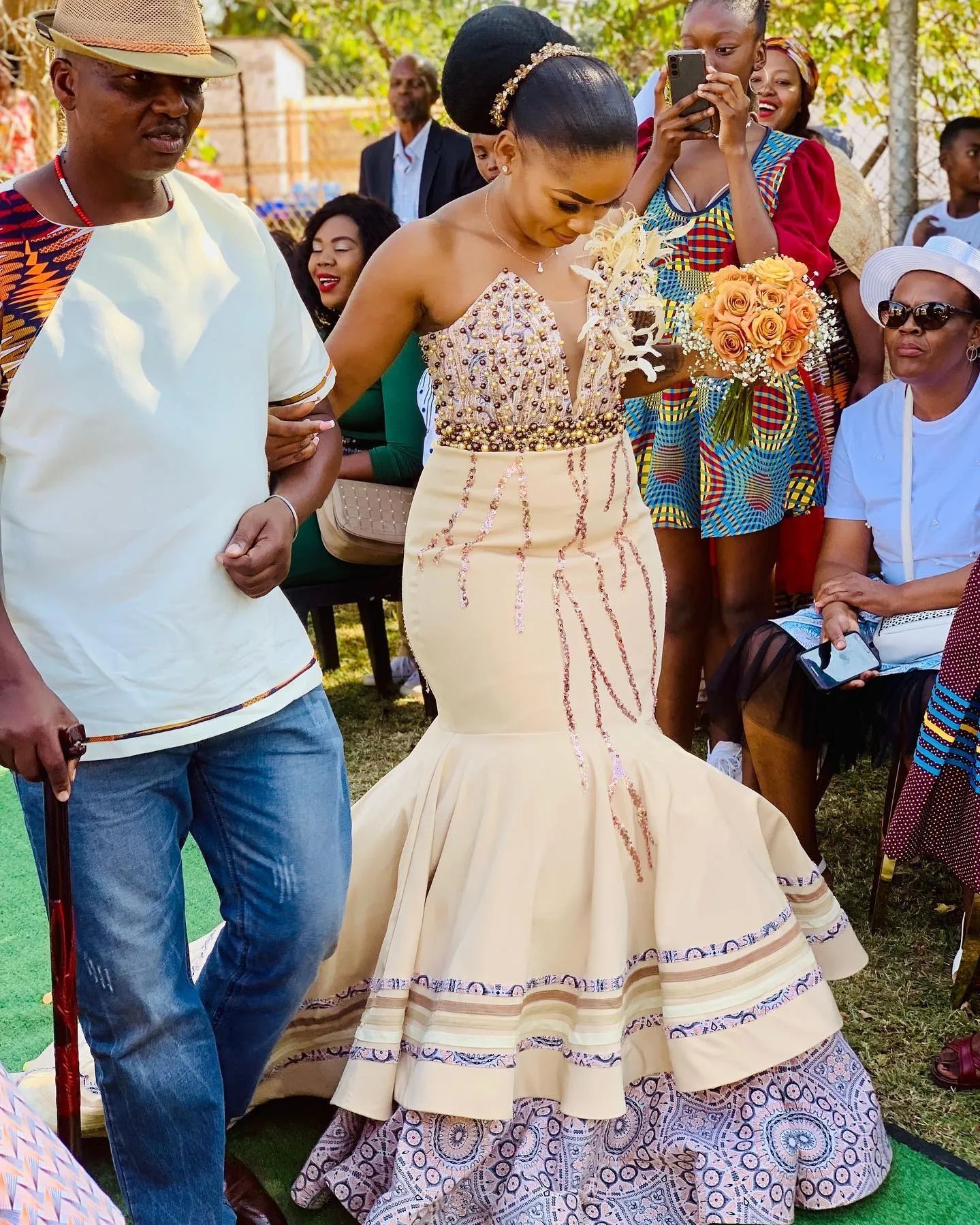
Xhosa Traditional Dress
The rich heritage of South Africa is beautifully reflected in the traditional dresses worn by its diverse communities. One such dress is the Xhosa traditional dress, which holds immense cultural significance.
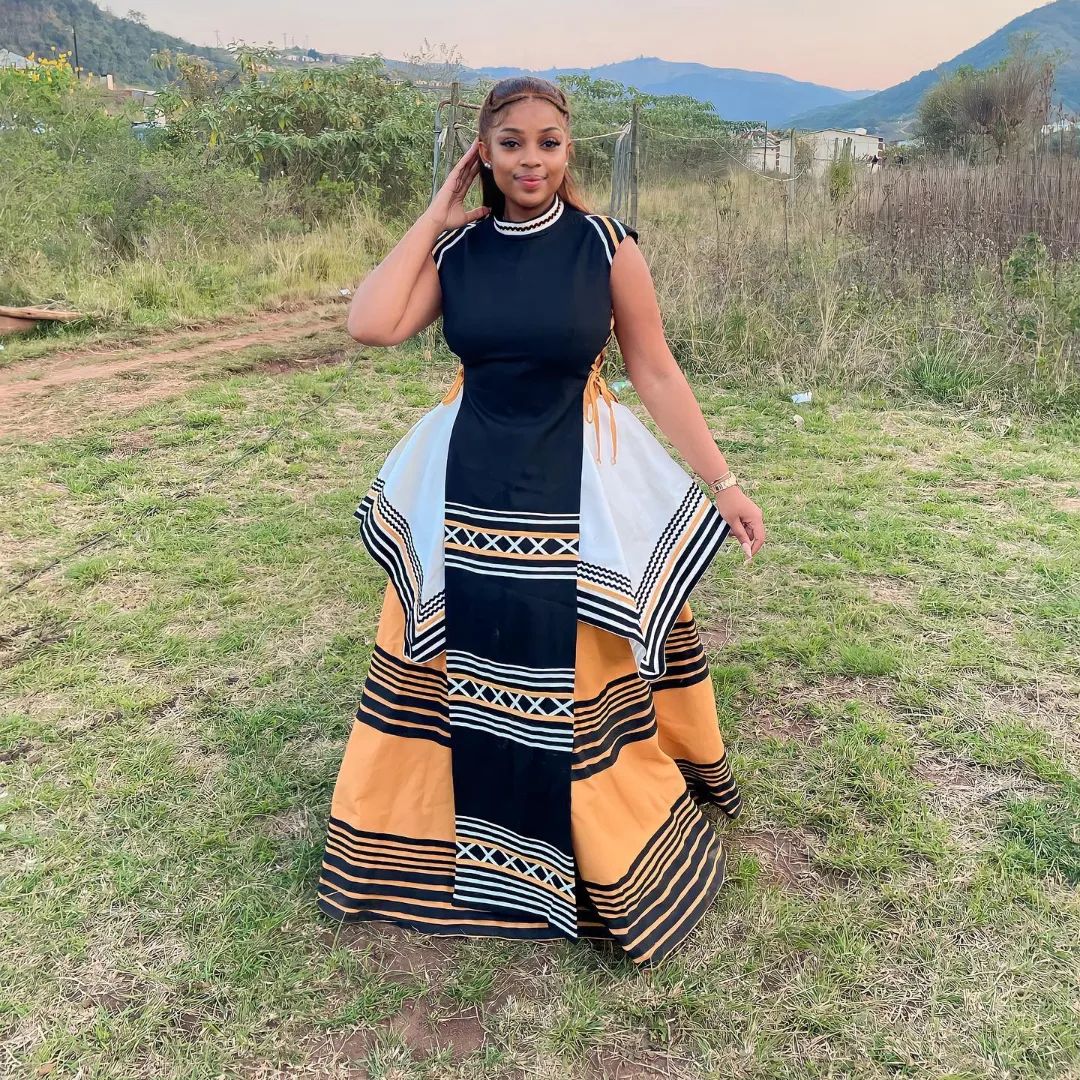
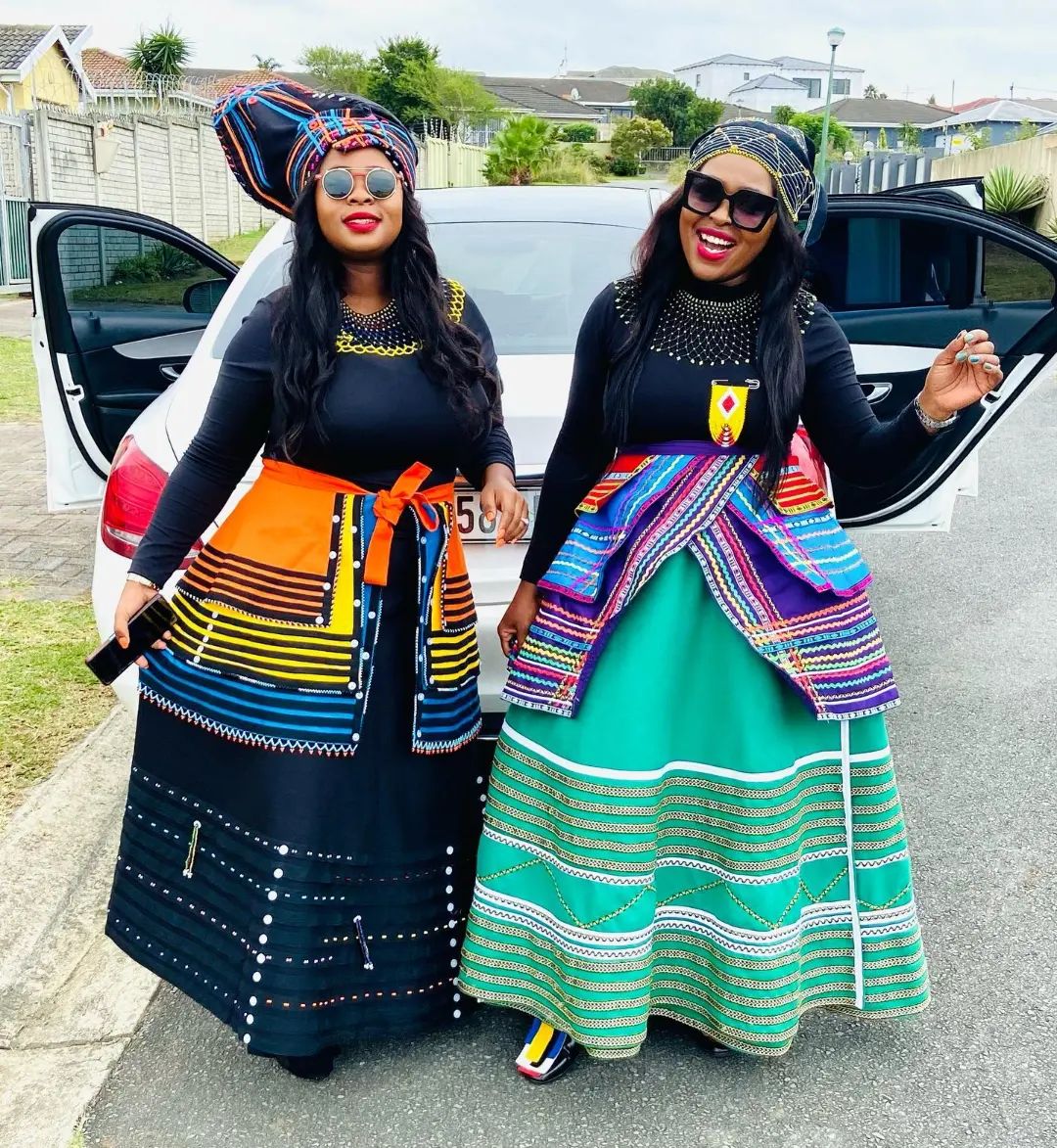
Distinctive features of Xhosa traditional dress
The Xhosa traditional dress is known for its vibrant colors, intricate beadwork, and unique patterns. Women typically wear a skirt made of bright fabrics, accompanied by a matching headscarf. The outfits are often accessorized with beaded necklaces, bracelets, and belts, adding to their striking visual appeal.
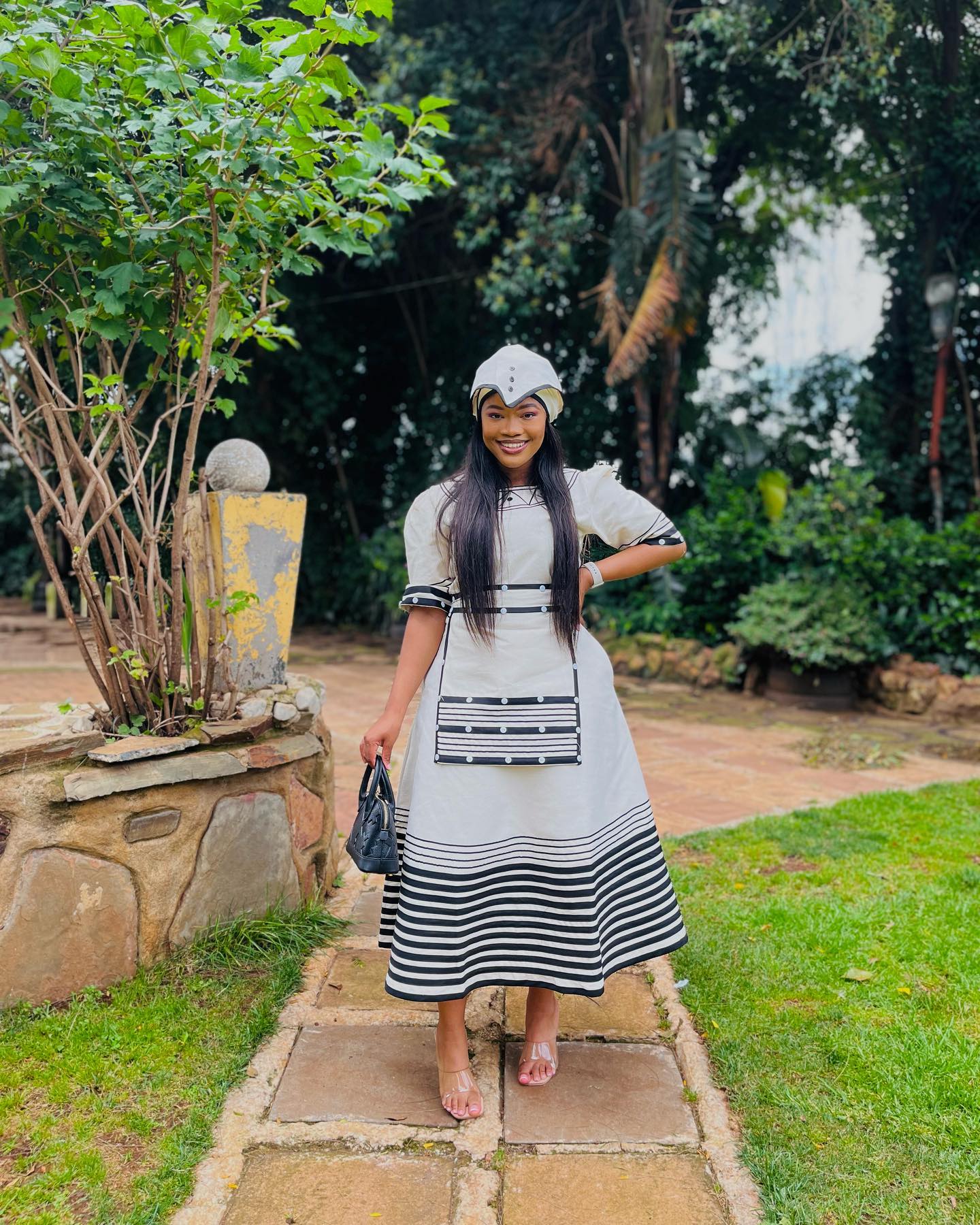
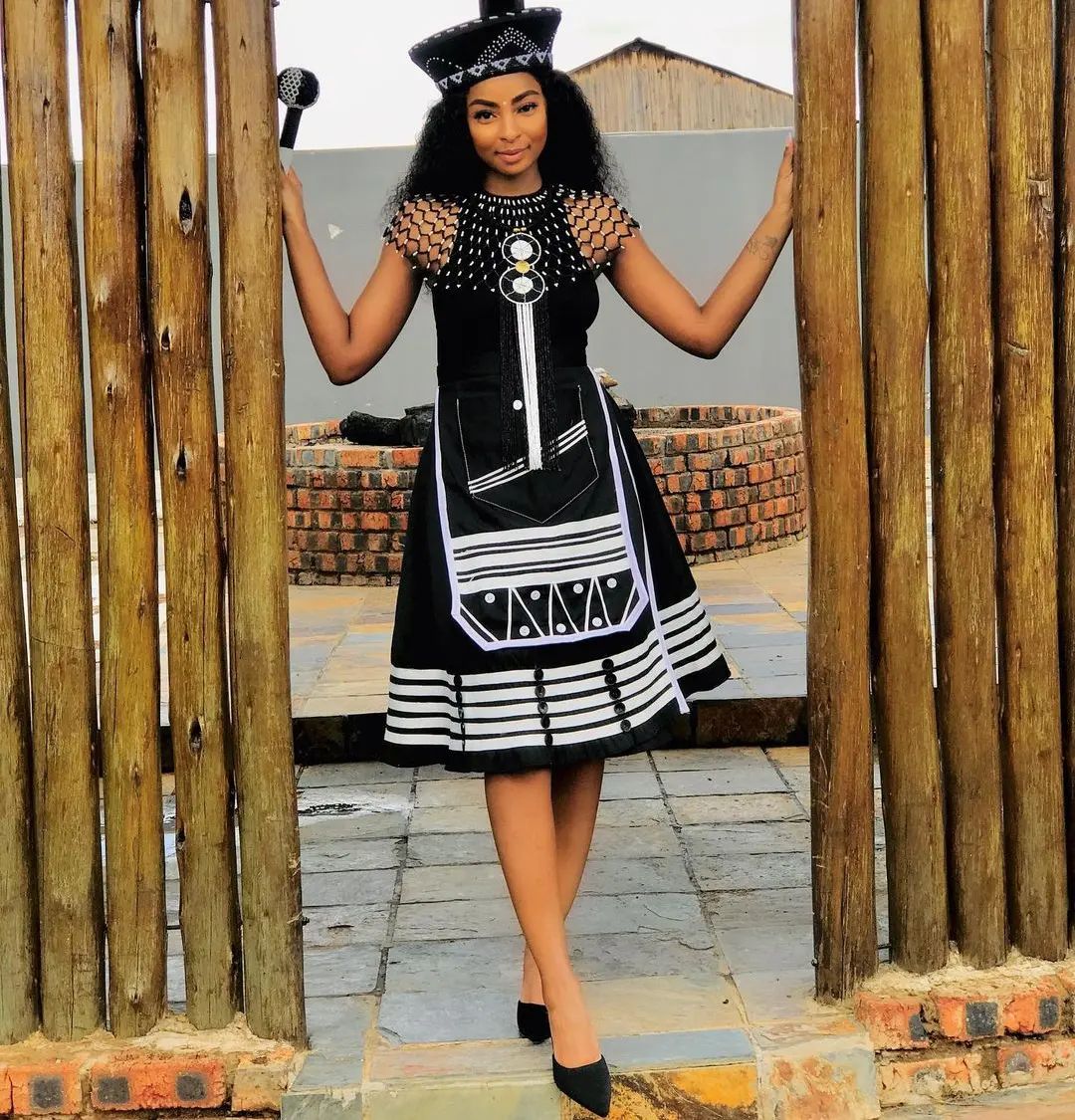
Significance of beadwork and patterns
Beadwork plays a crucial role in Xhosa traditional dress. The intricate designs represent various symbols and meanings, such as love, fertility, and family lineage. These patterns are passed down from generation to generation, preserving the cultural heritage through artistry and storytelling.
The Xhosa traditional dress holds a special place in the everyday lives and celebrations of the Xhosa people. It serves as a way to express their pride in their culture and history. By preserving and promoting these traditional dresses, we can appreciate the beauty and significance of South Africa’s rich heritage.
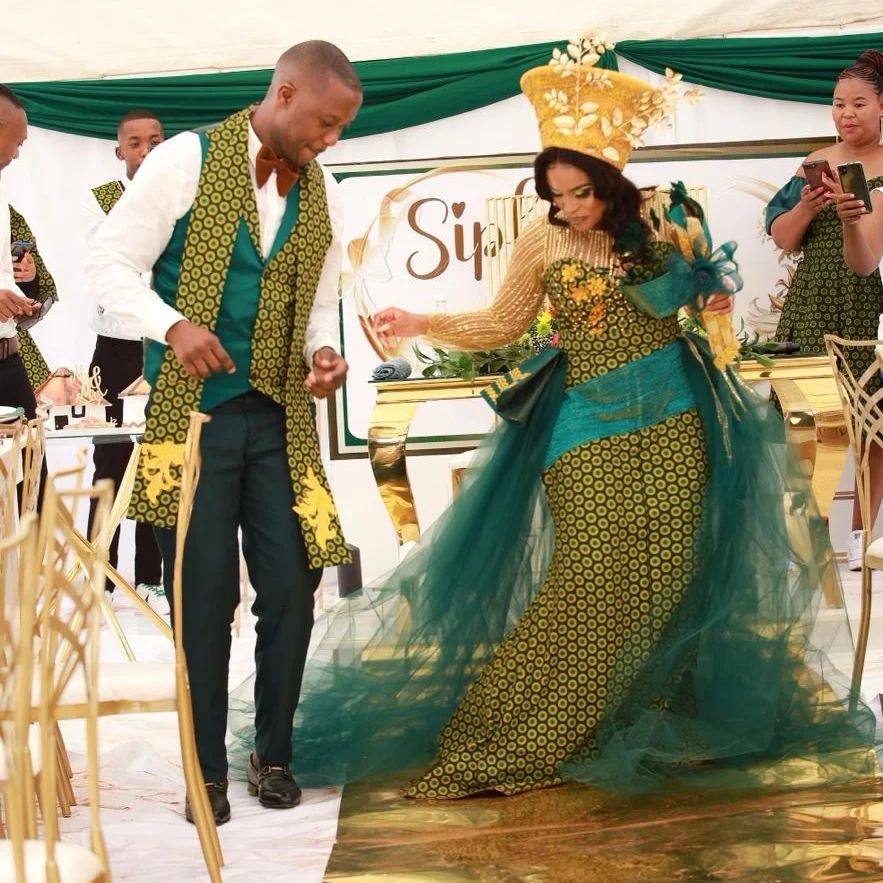
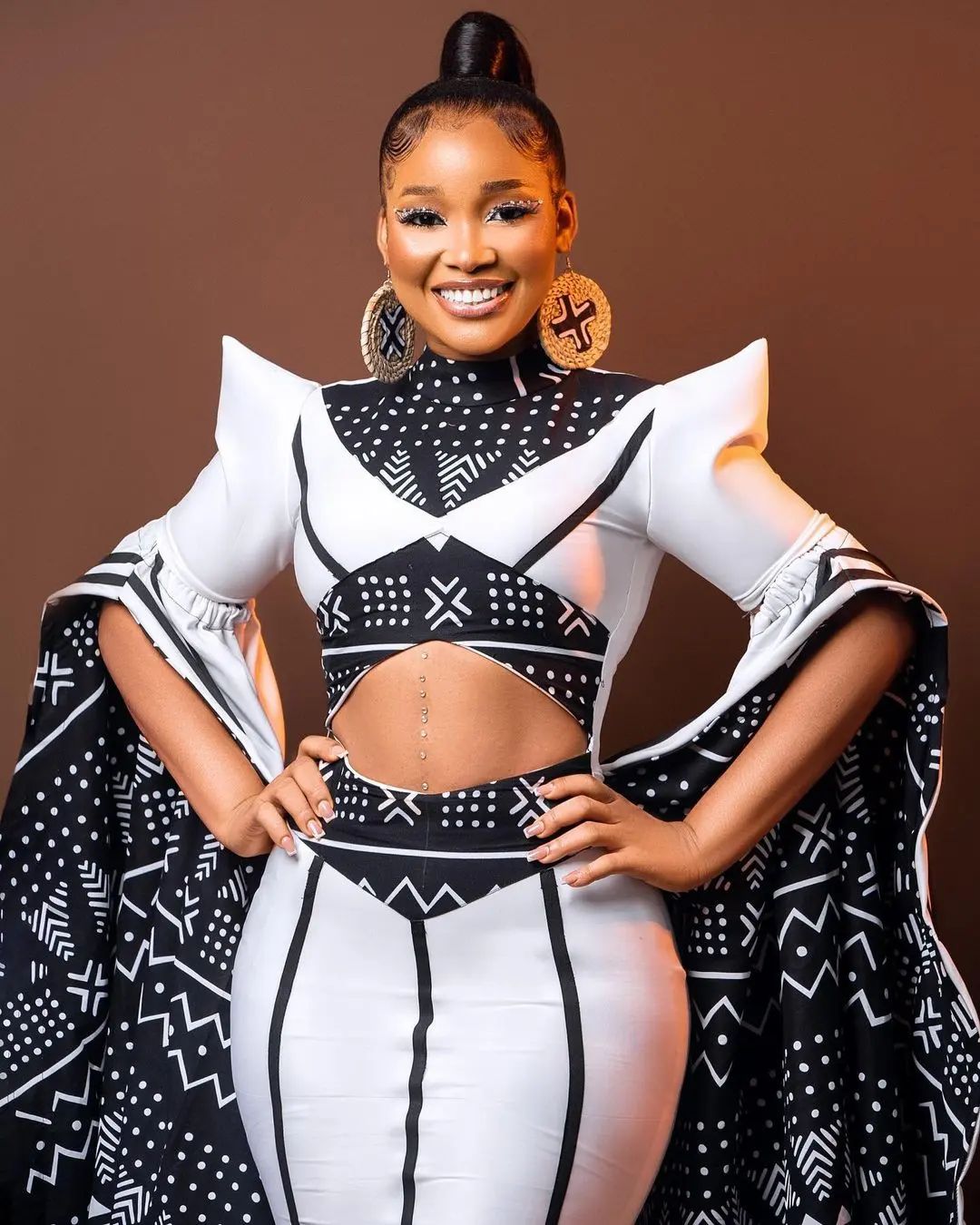
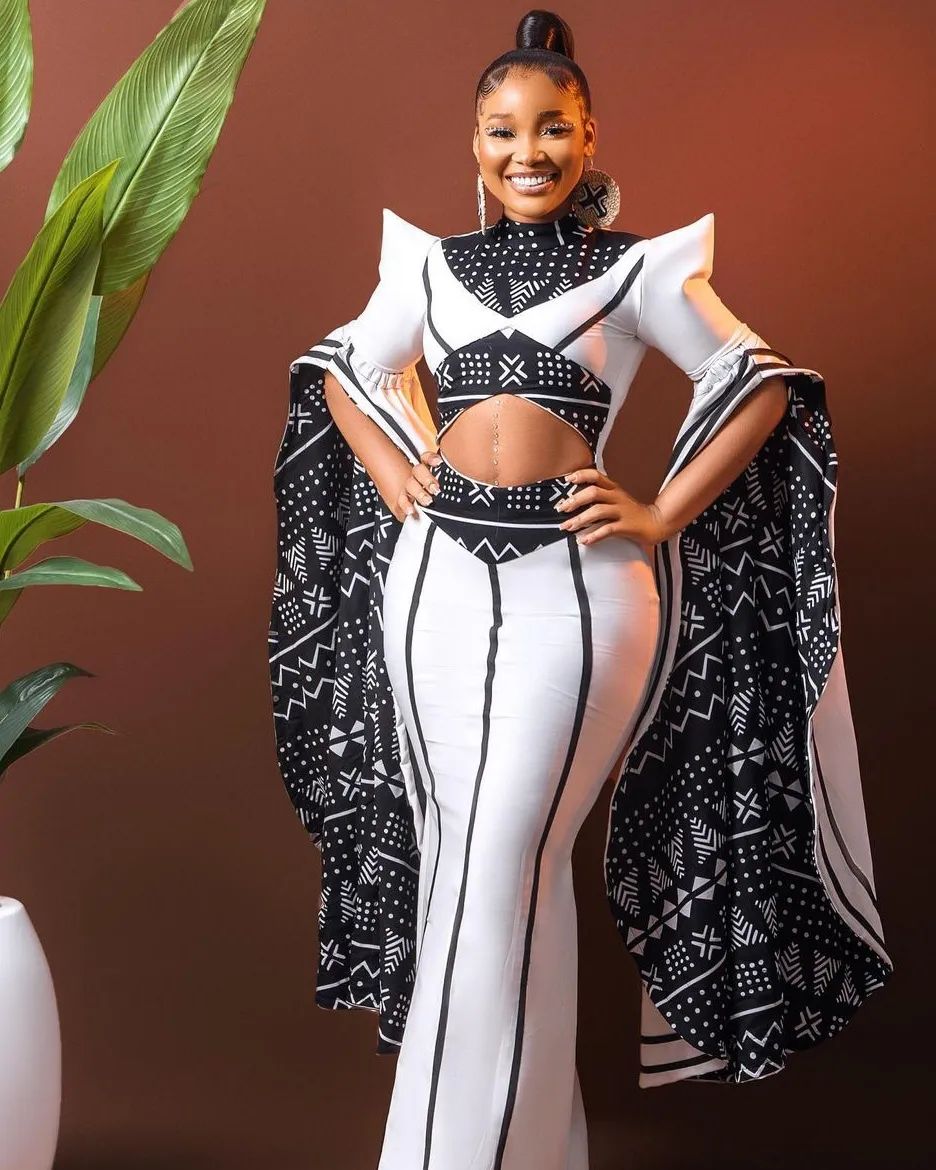
Sotho Traditional Dress
The traditional attire of the Sotho people in South Africa is a rich and vibrant reflection of their culture and heritage. It is an integral part of their identity, and they continue to embrace and celebrate it to this day.
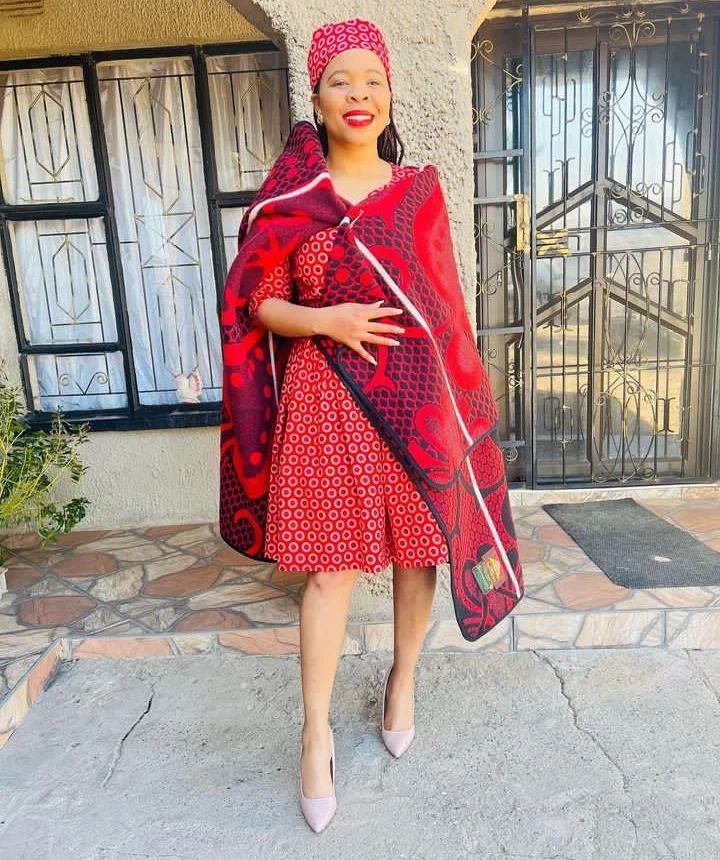
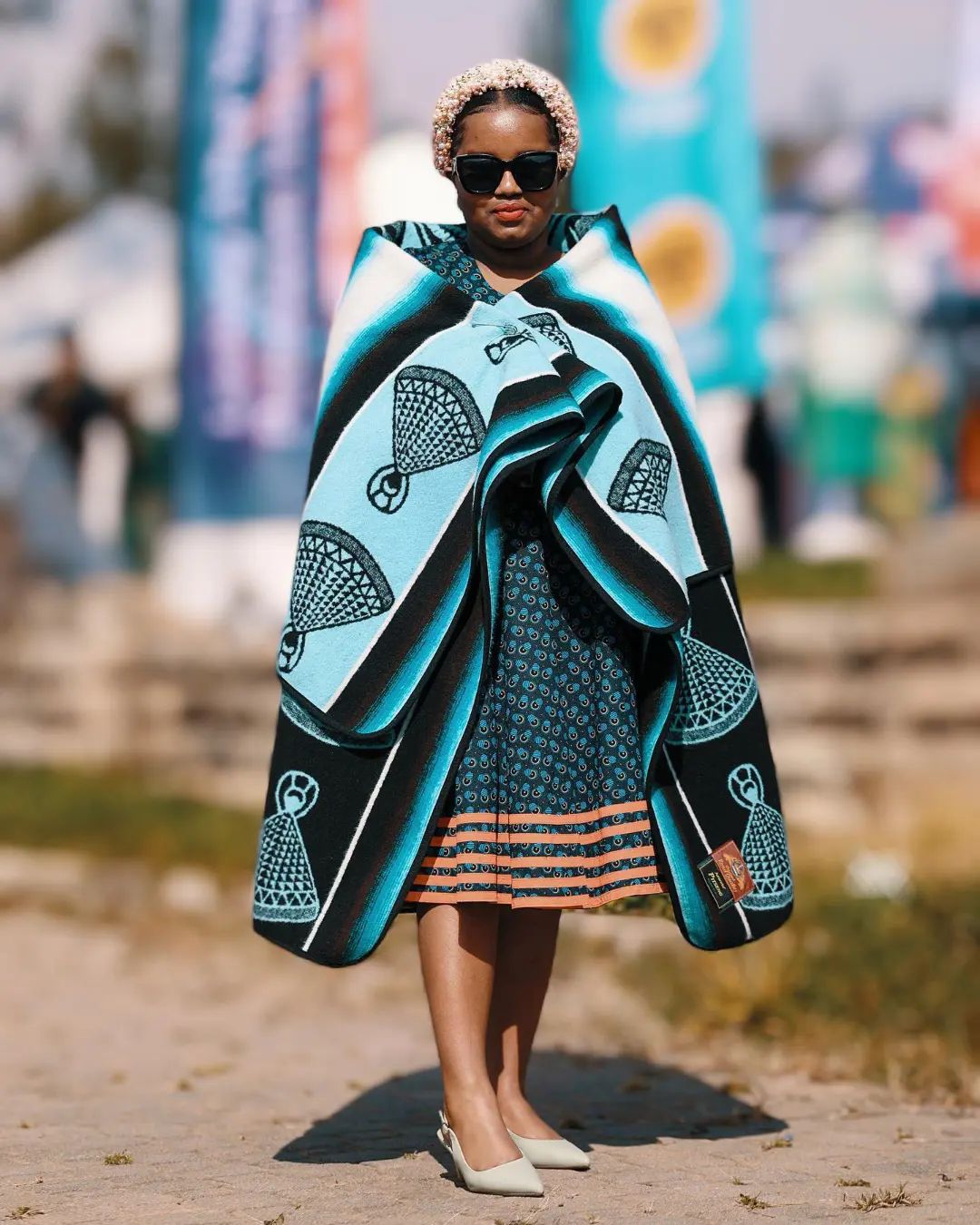
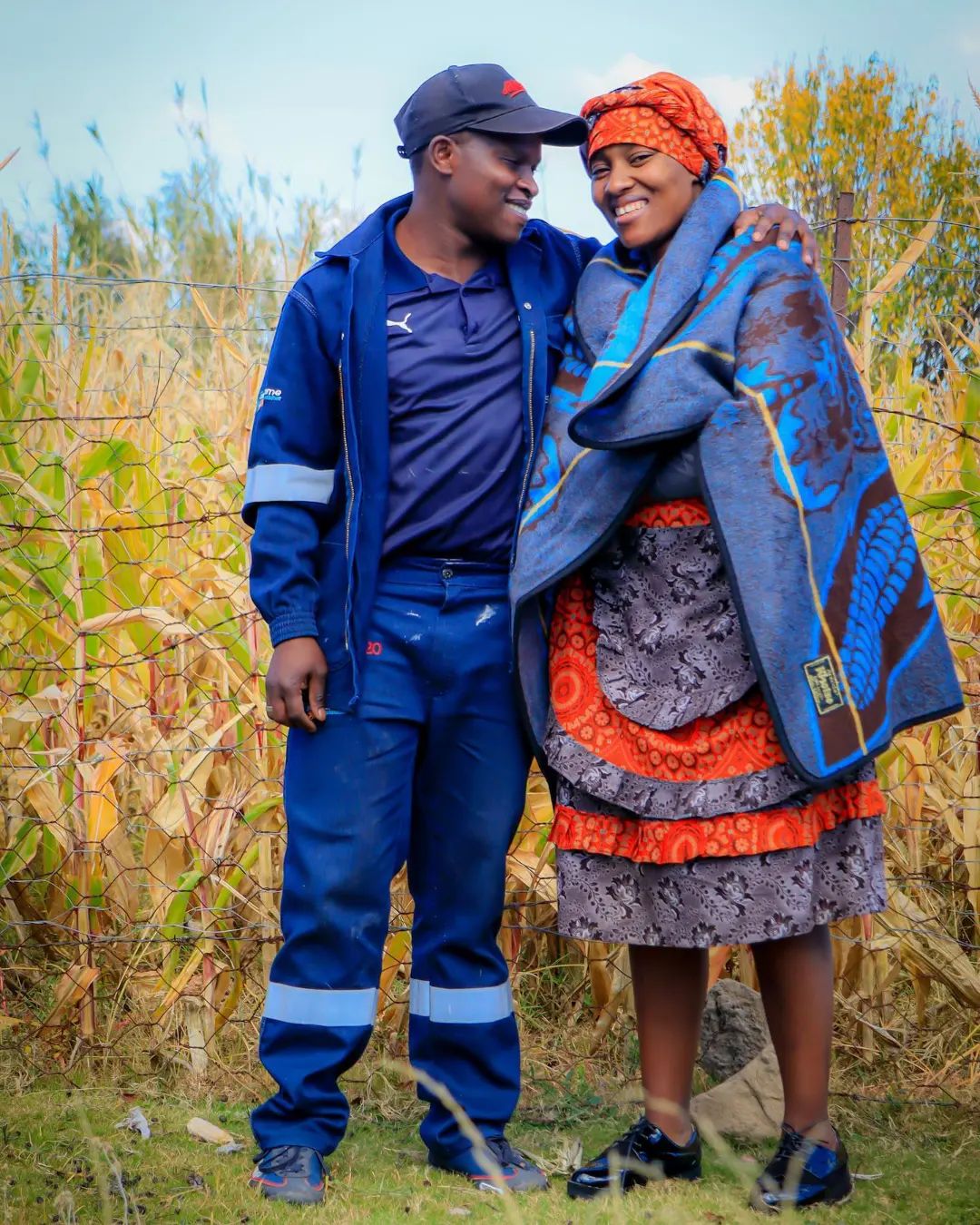
Traditional attire of the Sotho people
The traditional dress of the Sotho people is known for its colorful and intricate designs. Women often wear a garment known as a “seshoeshoe,” which is a fabric with various patterns and motifs. The seshoeshoe can be wrapped around the body in different ways, creating unique looks for different occasions.
Styles, colors, and symbolism
The styles and colors of the Sotho traditional dress hold significant meaning. Each color represents different emotions or stages of life. For example, red symbolizes love and passion, while blue represents spirituality and healing. The dress also incorporates symbols such as diamonds, triangles, or zigzag patterns, which have symbolic meanings within the Sotho culture.
Traditional dresses are not only worn for special occasions or ceremonies but also as everyday attire by some Sotho people. By preserving and embracing their traditional dress, the Sotho people continue to pass down their culture from one generation to the next.
The traditional dresses of South African communities like the Sotho people are not just pieces of clothing; they represent a deep-rooted connection to their history, customs, and values. Exploring and appreciating these traditional dresses allows us to immerse ourselves in the rich heritage of South Africa.
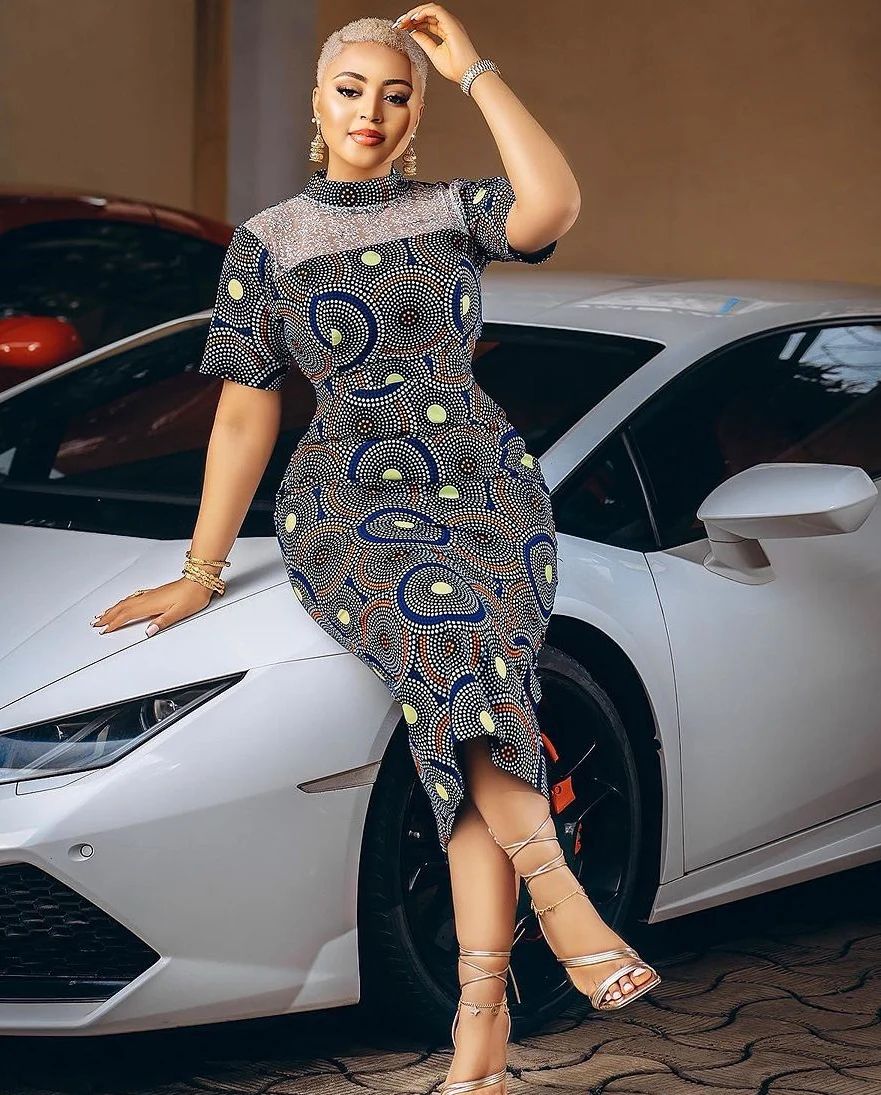
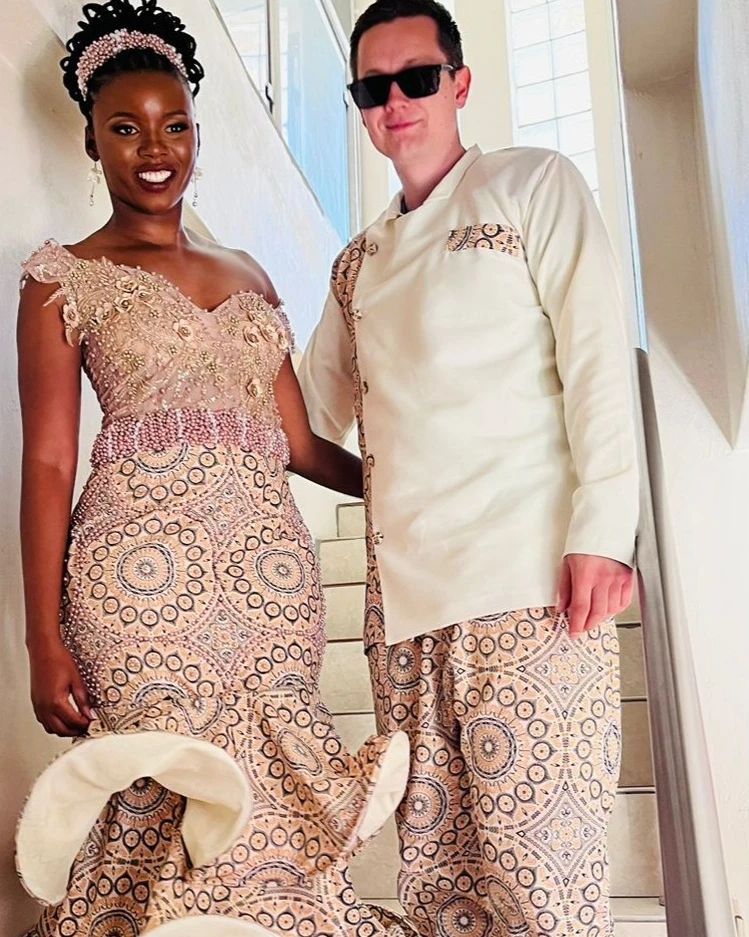
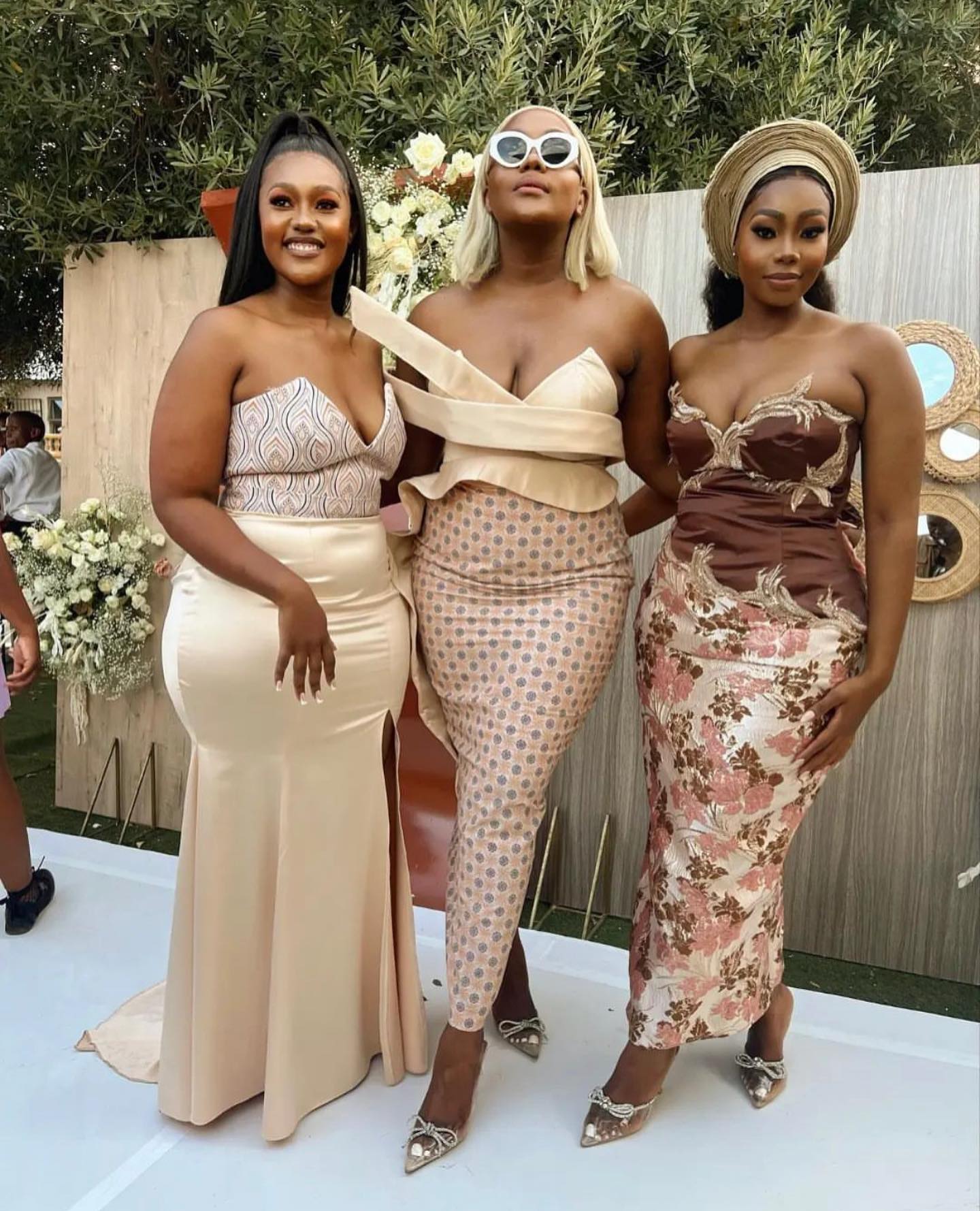
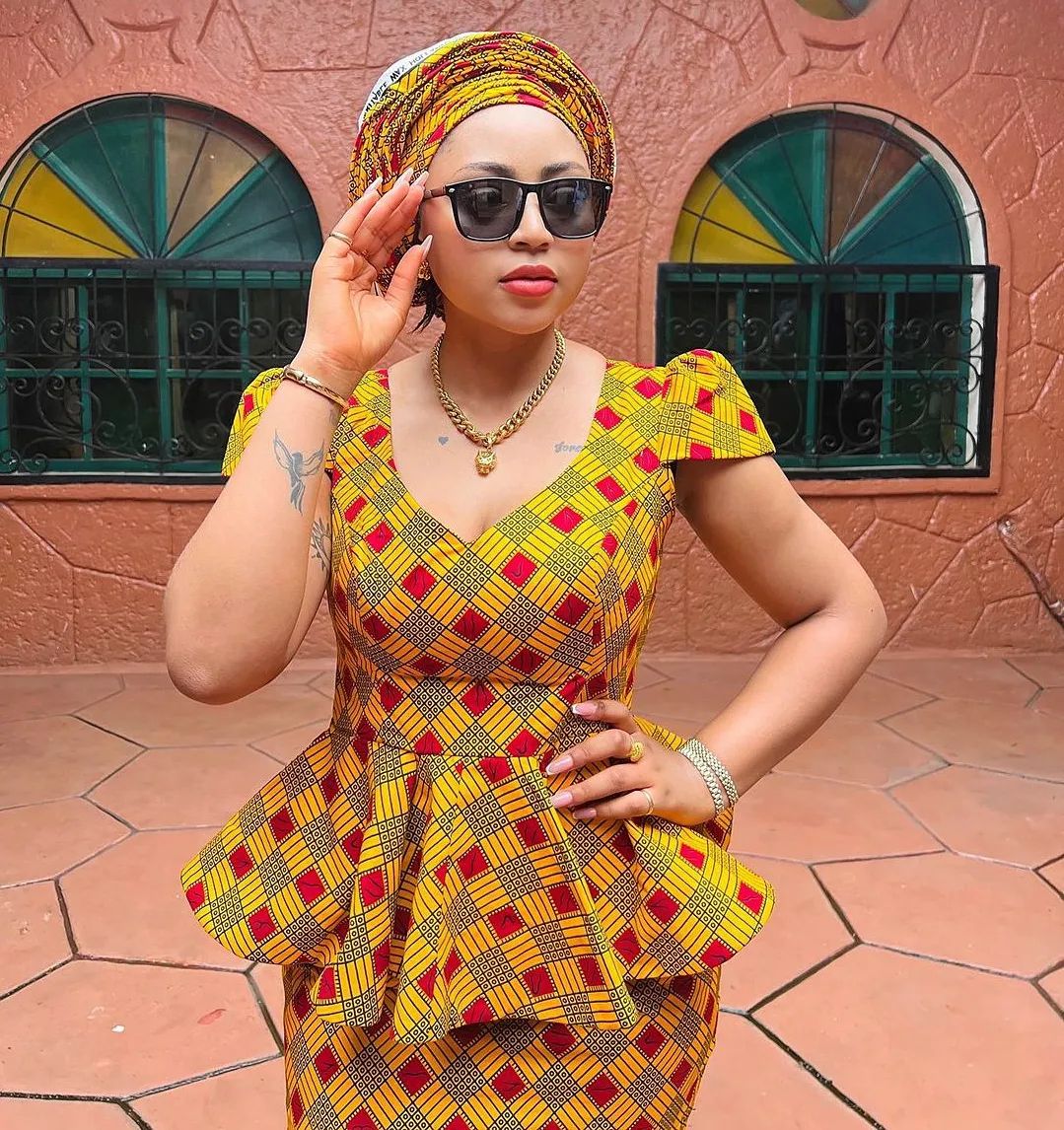
Ndebele Traditional Dress
Unique and vibrant Ndebele traditional dress
South Africa is rich in cultural heritage, and one traditional dress that stands out is the Ndebele traditional dress. Known for its unique and vibrant designs, the Ndebele traditional dress is a testament to the rich cultural history of the Ndebele people.
The Ndebele traditional dress is characterized by bold and striking geometric patterns. These intricate designs are not just visually stunning but also hold symbolic meaning. Each pattern represents a story or a significant aspect of the Ndebele culture, passed down through generations.
The vibrant colors used in the Ndebele traditional dress further enhance its beauty. Bright shades of red, blue, yellow, and green create a visually captivating ensemble that celebrates the Ndebele culture’s vibrancy and creativity.
Beyond its visual appeal, the Ndebele traditional dress holds deep cultural significance. It is a symbol of identity and pride for the Ndebele people. Wearing their traditional dress allows them to connect with their roots and honor their ancestors.
Whether it’s for special occasions or everyday wear, the Ndebele traditional dress continues to be cherished and celebrated by the Ndebele community. It serves as a reminder of their traditions, values, and cultural heritage.
So next time you have the opportunity to explore the rich heritage of South African traditional dresses, make sure to discover the unique and vibrant world of the Ndebele traditional dress. It is an experience that will immerse you in the beauty and cultural depth of this remarkable tradition.
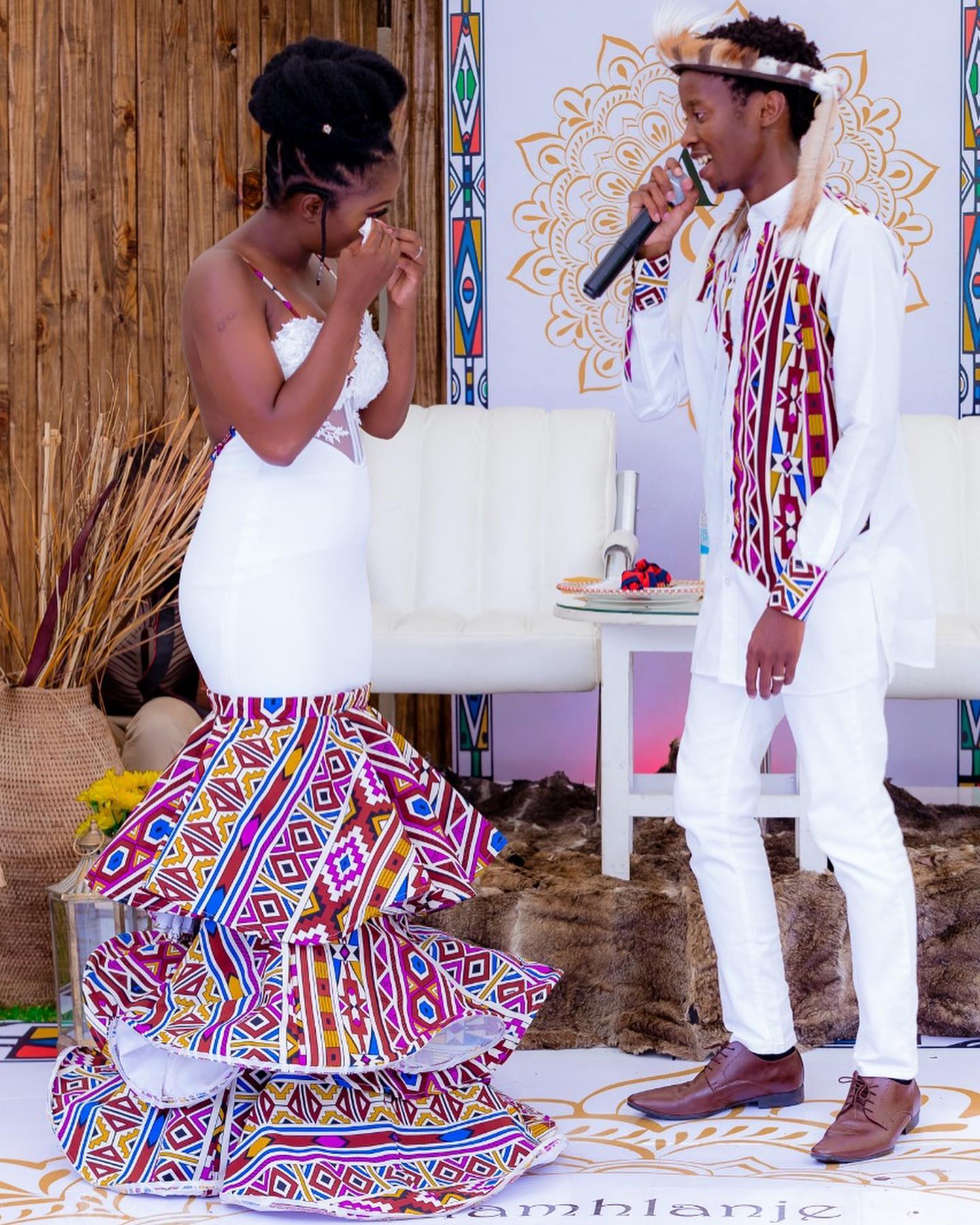
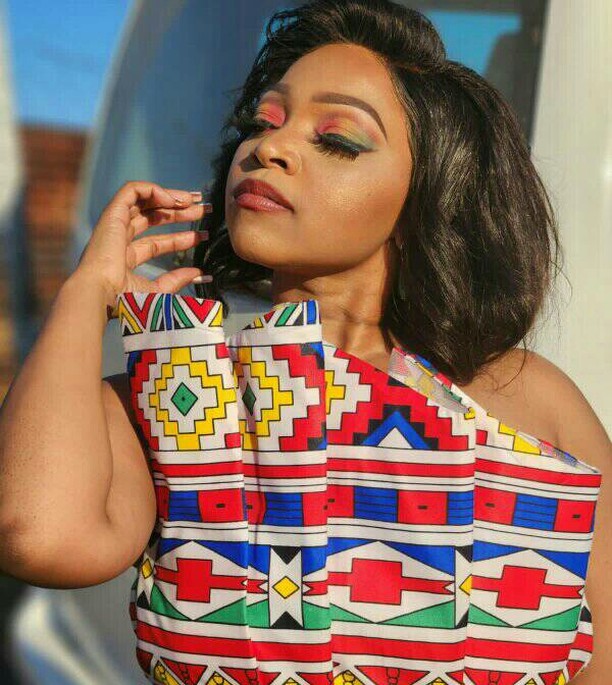
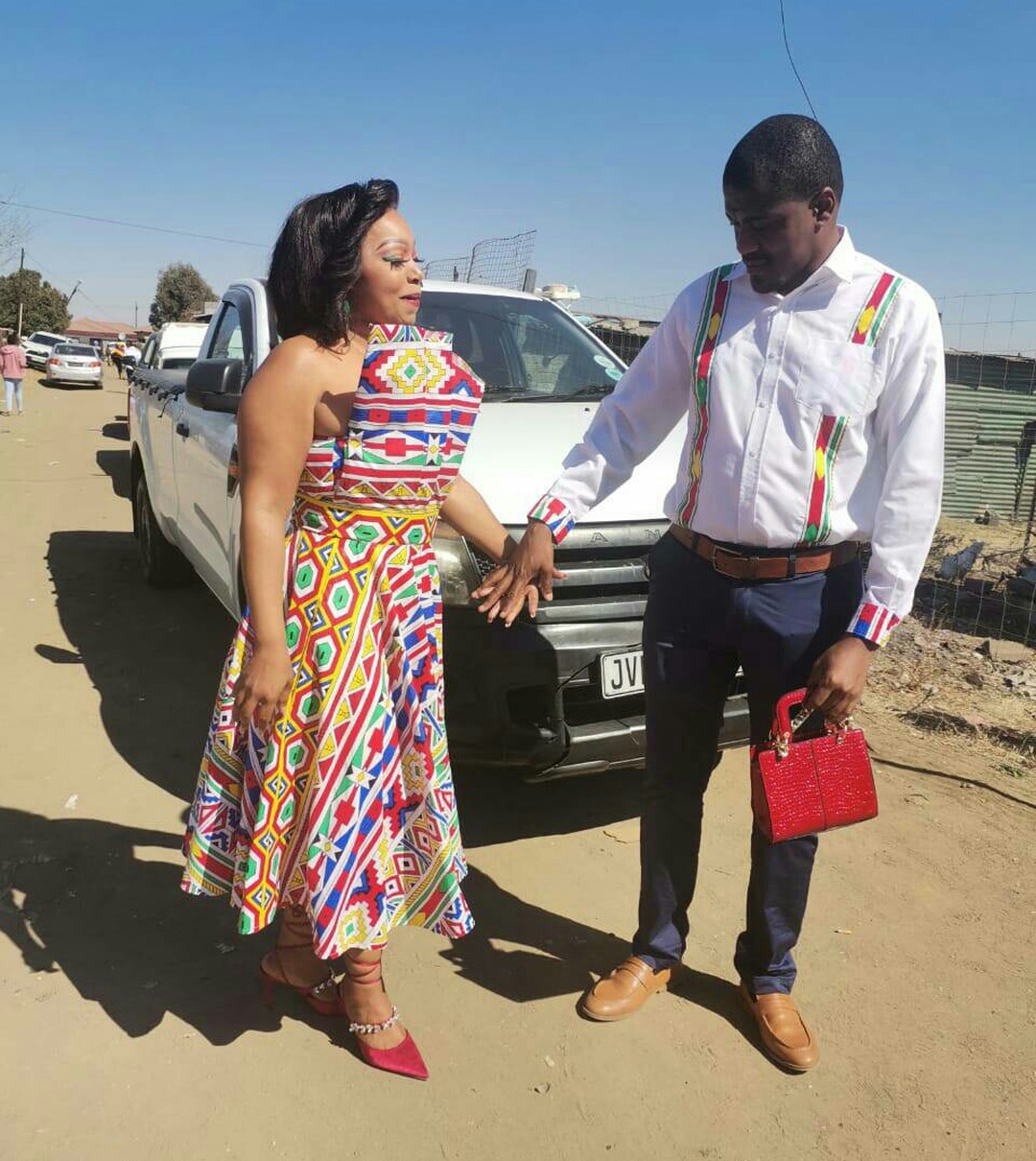
Venda Traditional Dress
Traditional clothing of the Venda people
The Venda people, who reside in the northern part of South Africa, have a rich and vibrant culture, which is reflected in their traditional dress. The attire worn by the Venda people is both beautiful and symbolic, representing their heritage and customs.
The women of the Venda community typically wear a garment called a “mutendi,” which is a long skirt made of brightly colored fabric. The mutendi is often paired with a matching blouse and accessorized with beaded jewelry, such as necklaces and bracelets. The colors and patterns on the clothing are not only visually appealing but also have deeper meanings within their culture.
For men, the traditional attire consists of a knee-length skirt called “mushanana” or “nguwo.” This is usually worn with a shirt and a “magora,” which is a shoulder covering made from animal hide. The men also wear hats adorned with feathers to complete their look.
The Venda traditional dress showcases their sense of identity and pride in their cultural heritage. It is often worn during important ceremonies and celebrations, allowing them to connect with their roots and showcase their traditions to the world.
By exploring the rich heritage of South African traditional dresses like those of the Venda people, we can gain a greater understanding and appreciation for the diverse cultures that make up this beautiful country.
Comments are closed.